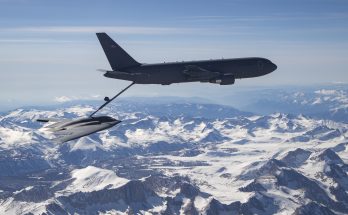
In the complex landscape of Taiwanese defense politics, a stark divide has emerged between the Kuomintang (KMT) and the Democratic Progressive Party (DPP) of the Tsai administration, particularly concerning the adoption of an asymmetric warfare policy. The implications of this internal chasm go beyond ideological differences, impacting Taiwan’s strategic preparedness and its ability to navigate potential conflicts.
The KMT’s aversion to asymmetric warfare stems partly from the constraints imposed by the US-backed Arm Taiwan Act and Taiwan Deterrence Act. These acts restrict the allocation of Foreign Military Finance (FMF) to asymmetric warfare capabilities, tying Taiwan to a defensive stance. The KMT expresses valid concerns about Taiwan’s vulnerability in the event of a Chinese invasion, particularly if the U.S. chooses not to deploy troops when needed.
Central to this dilemma is the KMT’s skepticism about the U.S. commitment to intervene in wartime situations. Consequently, KMT members emphasize the necessity for symmetric warfare capabilities. Alexander Huang, Chief of the KMT’s International Affairs Dept, underscores the need to focus on responding to gray-zone threats and safeguarding sea lines of communications (SLOCs) to avoid becoming an “isolated fortress.” The KMT criticizes a defense posture prioritizing sea mines, drones, and MANPADS, which serve no deterrence purpose, over fighter jets and aircraft carriers.
Concerns regarding clear US dedication to involvement also stem from wargames denoting the outcome of likely scenarios.
In the event of an air attack, Taiwanese F-16V aircraft would likely face China’s J-20 stealth fighters. The only scenario in which the F-16V comes out victorious is with the aid of the F-35, which the U.S. is reluctant to deliver for the same reason it refused to deliver AIM-120 missiles purchased by Taiwan for over 20 years – that it might end up in the hands of the People’s Liberation Army (PLA). The U.S. has, however, delivered the F-35 to both South Korea and Japan, despite neither having as great a need.
Contrary to the KMT, the Tsai administration aligns with the U.S. asymmetric strategy. Budget allocations of approximately 34 percent and 18 percent for indigenous anti-ship cruise missiles and ground-based air defense missiles indicate a strategic prioritization. Noteworthy is the focus on constructing 500-ton Tuo Chiang-class corvettes over the 4,500-ton frigates sought by the KMT, reflecting a commitment to coastal defense over maritime domination. Huang denoted the KMT’s disapproval of pursuing the downsized vessel saying, “If the Taiwan Navy cannot sail afar, it becomes a mere extension of the Army.”
In analyzing the differing defense strategies of Taiwanese political parties, particularly the Democratic Progressive Party (DPP) and the Kuomintang (KMT), it’s essential to grasp the nuances of their respective approaches. The DPP, despite perceiving China as an imminent threat, adopts a purely defensive stance. Their strategy is not devoid of offensive capabilities, as evidenced by investments in submarines, combat aircraft, and naval warships. However, the DPP’s asymmetric approach is strategically designed to counter China’s “gray zone” tactics, as evident in Taiwan’s recent Quadrennial Defense Review and National Defense Report. This underscores tactical flexibility on the part of the DPP, aligning their defense strategy with the evolving nature of geopolitical challenges in the region.
On the other hand, the KMT advocates for a defensive strategy that prioritizes higher-capacity and capability firepower, signaling an intention to deter China at a greater distance and – from their vantage point – at a higher potential cost. The party emphasizes the acquisition of more “traditional” hardware to deter China and views the DPP approach as too dependent upon U.S. support in the event of conflict.
The nuanced distinctions in these defense strategies reflect the parties’ assessments of the contemporary security landscape and their respective visions for Taiwan’s defense capabilities – things to keep in mind as Taiwan’s 2024 election cycle approaches.

Aja Melville is an accomplished editor and analyst with expertise in open-source intelligence (OSINT) and database management. As the Weapons Editor and Analyst at Military Periscope, Aja has applied her analytical skills and in-depth knowledge in military affairs and global defense sector advancements, particularly focusing on China and the Asia-Pacific region.
Aja's commitment to international relations and Asia-Pacific focus is highlighted by her educational background. She holds a Bachelor of Arts in International Relations and Chinese Language from Bard College, complemented by a Certificate of Advanced International Studies from the Bard Globalization and International Affairs Program. Aja further expanded her linguistic skills with a Certificate of Intensive Language Studies in Chinese (Mandarin) from Qingdao University.




